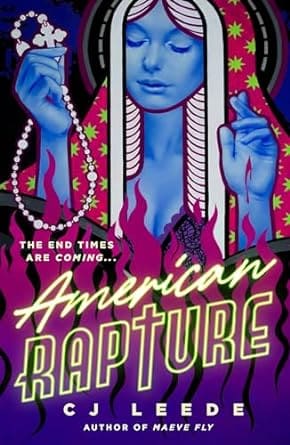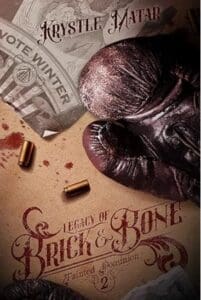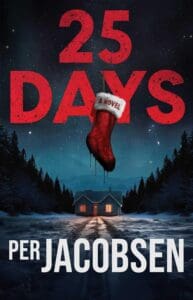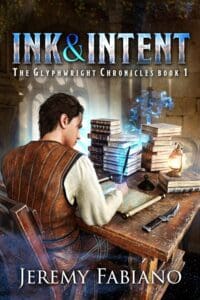
Synopsis:
A virus is spreading across America, transforming the infected and making them feral with lust. Sophie, a good Catholic girl, must traverse the hellscape of the midwest to try to find her family while the world around her burns. Along the way she discovers there are far worse fates than dying a virgin.
Review:
C.J. Leede’s 2023 debut, Maeve Fly, presented us with a gleefully sociopathic protagonist. Maeve is an unapologetic hedonist, masochist, and, well, murderer. In Maeve Fly, this proud middle finger to female role expectations and to discourse about the “likability” of fictional characters, is set against the backdrop of the world of the Disney Princesses. Maeve works as a princess in the park, and the contrast between her extracurricular activities (consuming porn, listening to Halloween music, weird sex, and murder) and the well-scrubbed image of the princess does a lot of work. It doesn’t hurt that in Maeve Fly, we know that the Disney mythology is just that, myth, a cleverly spun illusion used to sell an experience and merchandise.
It’s a testament to the power of Maeve Fly that Maeve is so “likable.” Even at her worst, there’s a core of damaged humanity lurking underneath, and–let’s face it–she’s a hell of a lot of fun.
In her follow up, American Rapture, Leede flips the script.
Sophie is the sheltered innocent, held captive by her parents’ decidedly extreme version of Catholicism, and tormented by her body’s hormone-fueled transformations. She is the princess in the tower.
In other words, she looks a lot like a Carrie White, ready to explode, perhaps transforming into something very much like Maeve. And who knows, had the world allowed it, that might have been her trajectory, but the normal course of teenage rebellion and religious trauma is hijacked by the end of the world.
A virus sweeps through the North East, into the Midwest, transforming the infected into violently sexual animals that rape, kill, and mutilate everything in their path. It’s an apocalypse tailor made to push all of Sophie’s buttons, and the traumas pile up one after the other as she finds herself alone and then, slowly, part of a found family, as she searches for her missing twin.
At literally every turn, this plot–and there is a lot of plot–is colored by Sophie’s own burgeoning sexuality. This is, as you might expect, troublesome, given the circumstances. It’s especially troublesome for Sophie, who has been taught to feel the most extreme shame and guilt at her own desires.
What Sophie gets is the slow and painful process of becoming an adult (questioning received wisdom, becoming a sexual being, being challenged by competing belief systems, having one’s heart broken) all compressed into the space of a week or so.
It’s a lot, and it would be a serious bummer if Sophie’s found family weren’t so compelling and dynamic. Early on in the book, I thought to myself that what Sophie needed was a Maeve, someone to shake her out of her shame spiral and teach her some of the simple joys of pleasure. We don’t quite get that, but we do get Cleo, a perfect mentor for Sophie’s hero’s journey. As much as I love Sophie, Cleo absolutely steals the show, presenting the adult figure who knows that the time is much too short to play the games of patriarchy, and who recognizes herself in Sophie. Her character is a monument to the power of truth-telling. She is the enemy of every taboo, and a kind of warrior queen.
American Rapture begins in trauma, and the trauma doesn’t let up. That goes for Sophie, but it also goes for the reader. Leede is uncompromising, and knows no boundary. It’s the apocalypse, and in the apocalypse, people die. That those deaths are so powerful says a lot about the depth of the world of American Rapture.
Leede has built something out of the raw materials of Maeve Fly: desire, pleasure, guilt, and violence, and she has remixed them into something very different, something that might hold out some slight chance for hope.
It’s is a roadtrip through the heart of a country turned sick on its own hypocrisy and hate, a Dantean journey into a moment that feels very much like our current historical moment. It’s also a love story, a coming of age story, a dog story, and a guided tour through a surreal midwestern landscape. It’s a little bit of everything, and it’s pretty much guaranteed to rip your heart out.








Leave a Reply